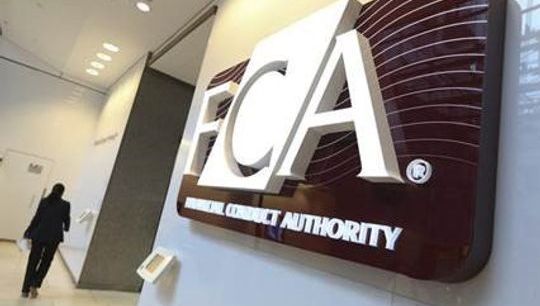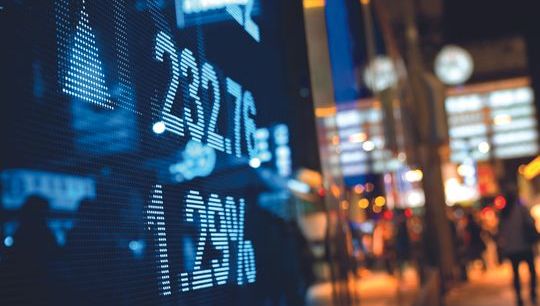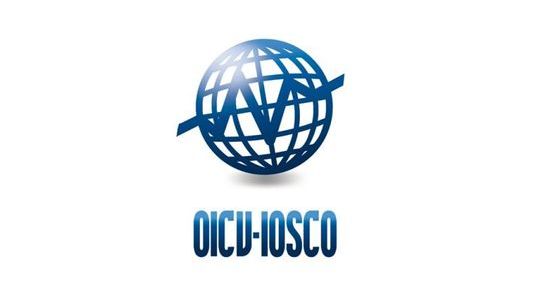Time to open your eyes to an environmental emergency (or get stung by a jellyfish!)
By Adam Sweidan; Emily Forsyth-Davies, Aurum Research Limited
Published: 30 November 2021
The problem
Over the past two years, we’ve seen irrefutable evidence that climate change and the extinction crisis are real and are causing significant social turmoil[i]. There has been both direct disruption, such as the increase in extreme weather events, and indirect, such as the rise in more dramatic events driven by biodiversity loss which increase the likelihood of zoonotic diseases which pass from animals to humans, such as COVID-19.
It’s now hard to imagine a day without a headline about the environmental emergency. Especially the pressing rise in global temperatures – with the world on average having already heated by 1°C since the pre-industrial era. To put this into context, at a temperature rise of 1.5°C, it is estimated that 14% of the world’s population will be hit by severe heatwaves once every five years. At 2°C, this number jumps to more than a third of the global population[ii].
The biodiversity crisis is often overlooked relative to climate change, but is perhaps even more pressing. One million, or a quarter of all known species[iii], are threatened with extinction by 2050. Over the past two years the COVID-19 pandemic has highlighted the interconnected relationship between reduced biodiversity and destruction of forests, and increased likelihood of future pandemics and infectious diseases.
The human cost of these events is huge, COVID-19 has been incredibly destructive with an estimated 4.9 million deaths. To put some context around this it is broadly equivalent to the estimated five million excess deaths[iv] that are already directly related to temperature change each year, which is likely to be a vast underestimate relative to the full impact of climate change.
In addition, there is also an interlinked social emergency directly linked to the increase in carbon emissions and the associated habitat and biodiversity loss.
The World Health Organisation (WHO) estimated in 2012 that nearly 13 million people die each year[v] from environmentally related health risks, a number which is highly likely to have risen since. The WHO currently estimate around 99% of the world’s population[vi] live in places where air quality levels exceed WHO guideline limits. One in five premature deaths are linked to air pollution[vii]. In 2020, one in four people lacked access to safe drinking water in their homes[viii], and more than 2 billion did not have access to enough safe and nutritious food[ix] or essential medicines[x].
Equally as alarming is the prevalence of micro plastics. For those people fortunate enough to have access to adequate food and water, it is estimated the average person is consuming five grams of plastic each week[xi], roughly equivalent to a credit card.
Western thinking often separates human health from the health of our environment. However, in the absence of healthy ecosystems, we no longer have access to critical resources for a healthy functioning society, such as breathable air, drinkable water and hospitable weather. The environmental crisis is also a social crisis, a fact that is often overlooked. Any solutions which benefit the environment should also be designed to have a positive impact on the people who live in it.
Are we thinking about the problem in the right way?
Around the 2008 Global Financial Crisis, the term ‘Black Swan’ was popularised in Nassim Taleb’s book of the same name. A Black Swan is a rare and unpredictable outlier event that is high impact, with the pro-active action typically focusing on building resilience. In the mid-2010s, this thinking evolved to speaking about Black Elephants, which was developed by Vinay Gupta and Dougald Hine[xii]. These are a cross between a Black Swan event and the proverbial ‘elephant in the room’. A Black Elephant is a problem which is well known and understood and yet no-one wants to address. This is despite the awareness that one day it will have devastating Black Swan-like consequences. This can lead to claims of a Black Swan event when, in fact, it is a Black Elephant that has been ignored. More recently, the Black Jellyfish has become another favoured term. A Black Jellyfish event is also a high-impact phenomenon, which becomes more prevalent by positive feedback and has the potential to escalate rapidly. For example, the continuing rise in ocean temperatures, and corresponding acidity levels, are creating conditions for jellyfish blooms to become more and more common. These blooms have forced shut-downs at coastal power plants around the world, including Oskarshamn plant in Sweden in 2013 (the site of one of the world’s largest nuclear reactors) [xiii].
A jellyfish is a particularly apt animal to represent climate change in this context, given the painful sting caused by their long tentacles, alongside their dramatic effect on the world's water systems. The Black Jellyfish analogy is also particularly suitable to describe the accelerating negative social impact of climate change and biodiversity loss in terms of the global pandemic.
The COVID-19 pandemic itself was an event that many have attempted to pass off as a Black Swan. Such events have, though, become more likely due to environmental changes. In fact, some sort of pandemic event was widely predicted prior to COVID-19, but it wasn’t addressed. Indeed pandemics have occurred regularly throughout history, but the possibility increases with deforestation and biodiversity loss. Deforestation leads to increased interactions between humans and wildlife. A loss in biodiversity usually results in a few species replacing many — and these species tend to be the ones hosting pathogens that can spread to humans.
There are clear parallels here with climate change, in the sense that it was a risk that was known about, but not addressed. The heat-trapping properties of carbon dioxide have been known since as far back as 1856 when Eunice Foote presented her short paper on how carbon dioxide in the atmosphere would cause global warming[xiv]. President Lyndon B. Johnson had detailed reports written on climate change in 1965 when climate scientists summarised the risks associated with rising carbon pollution.
So how do we solve the problem?
Against the enormity of the problem described above, taking action can often feel meaningless and futile. The International Monetary Fund’s’s recent report showed that the fossil fuel industry benefitted from US$5.9 trillion of government subsidies in 2020[xv]. That is US$11 million every minute. However, there's a popular Chinese proverb that says: “The best time to plant a tree was 20 years ago. The second best time is today.” And this seems particularly apt here. We can’t focus on the mistakes of the past, we need to focus our efforts on acting now if we are to avert environmental and human catastrophe.
And we need to recognise that these two aspects, environmental and social, are intrinsically linked. To solve one, you have to solve the other.
A similar relationship applies between investment choices and their associated environmental and social impact. This means investors have the power to make positive changes in both environmental and social areas simultaneously. According to The Carbon Majors Database, published by the Carbon Disclosure Project (CDP), 70% of fossil fuel emissions in the period 1998 - 2017 came from 100 companies, with 32% of emissions coming from public investor-owned companies[xvi]. This means investors are key to the transition to a sustainable economy.
Solving these problems is not just about identifying a cluster of black creatures and their impact. It’s about preparing for the changes or challenges such events represent and making sure that you don’t neglect to maintain the cages that will constrain your menagerie. Or, sticking with the animal analogy, it’s about looking for ways to encourage the jellyfish’s natural predators – the leatherback turtles and ocean sunfish –to restore equilibrium. As the challenges being faced are, by definition, global in nature, this equilibrium will need to be achieved by worldwide consensus.
Given the time and physical investment required, there can often be a reluctance for private companies to undertake such a challenge without a significant globally endorsed government policy shift.
The most important, and arguably most difficult, thing to do is to shift behaviours and mindsets from the current unsustainable system of over-consumption of planetary resources. However, as solutions are implemented it will be critical to ensure the intrinsic link between environmental and social outcomes is considered.
Given the scale of the challenge, it will require forward-thinking companies to employ a range of innovative concepts and to collaborate across different disciplines. It will also require a reassessment of how we as a society measure growth and what it means to be a successful society.
Every investment and personal choice we make is intrinsically linked to the planet and its inhabitants’ health, but for too long we have been focused on economic growth and GDP to the detriment of the environment and human health. We need to shift this mindset. To measure a nation’s success we should be looking at measures such as the health of the population and whether a country is consuming within boundaries that do not impact the long-term health of the planet.
How the alternatives sector can help
We believe the alternative investments sector’s resources, knowledge and lobbying power mean it has a critical role to play in contributing to and enabling public discourse that supports the case for systemic change. Similar to how a business is more resilient with a wide range of diversity dimensions involved in decision making, a biodiverse ecosystem is more resilient and a better carbon sink if there are abundant species, rather than a monoculture. As a first step, this is about promoting awareness of the carbon emissions and carbon intensity of business activities and encouraging action to reduce this where possible. We then need to address how to mitigate the impact of carbon emissions and how to help local communities build climate resilience. The next 10 years will be critical to ensure the planet does not become uninhabitable, so now is the time to invest in philanthropic initiatives focusing on environmental and social wellbeing.
Once you’ve decided to adapt to a sustainable economy it will be critical to create a compelling business case. But that shouldn’t be too difficult, because without a swift and significant change in mindset there will be no planet on which to do business.
[ii] https://www.theguardian.com/environment/ng-interactive/2021/oct/14/climate-change-happening-now-stats-graphs-maps-cop26
[v] https://www.who.int/news/item/15-03-2016-an-estimated-12-6-million-deaths-each-year-are-attributable-to-unhealthy-environments
[vii] https://www.hsph.harvard.edu/c-change/news/fossil-fuel-air-pollution-responsible-for-1-in-5-deaths-worldwide/
[viii] https://www.unicef.org/press-releases/billions-people-will-lack-access-safe-water-sanitation-and-hygiene-2030-unless
[xiii] https://www.theguardian.com/world/2013/oct/01/jellyfish-clog-swedish-nuclear-reactor-shutdown







